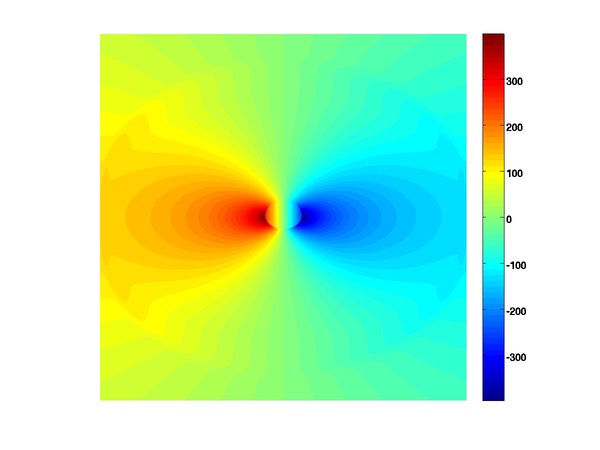
Rotation seems to be the key factor in producing the disk around a Be star. Be stars are rapid rotators, spinning once around in a day or so, compared to nearly a month for our Sun. The above picture is a theoretical "image" of the rotation of the star and disk. The colour bar to the right now codes for "radial velocity," that is, motion either away from us (red) or towards us (blue); the values are in km/s. For example, red represents a speed of about 300 km/s away from us, or about 10 times the orbital speed of the Earth around the Sun! In the picture, the central star is clearly visible. It rotates as a solid body-- as a unit-- and this means that different points on its "surface" have very different speeds (just like the Earth). The geometry is such that the zones of constant radial velocity on the star are vertical strips, red for the limb going away from us, and blue for the approaching one. The disk, on the other hand, is in Keplerian rotation: its rotation speed drops with distance from the star, just like the orbital speed of the planets in our solar system. Note that there is a sharp distinction in colour where the inner edge of the disk meets the star. This nicely illustrates a key issue in Be star research: the "surface" of the star is rotating must less quickly that the local orbital speed of the disk. Because we know of isolated B stars that are Be stars, the material in the disk must somehow come from the star's outer atmosphere. But as the image shows, the surface of the star is rotating much too slowly for gas to flow into an orbiting disk. Very careful observations suggest that the central B stars rotate at only ~80% of the orbital speed at the inner edge of the disk. What gives material an extra "kick" to get it into orbit? Currently we do no know!